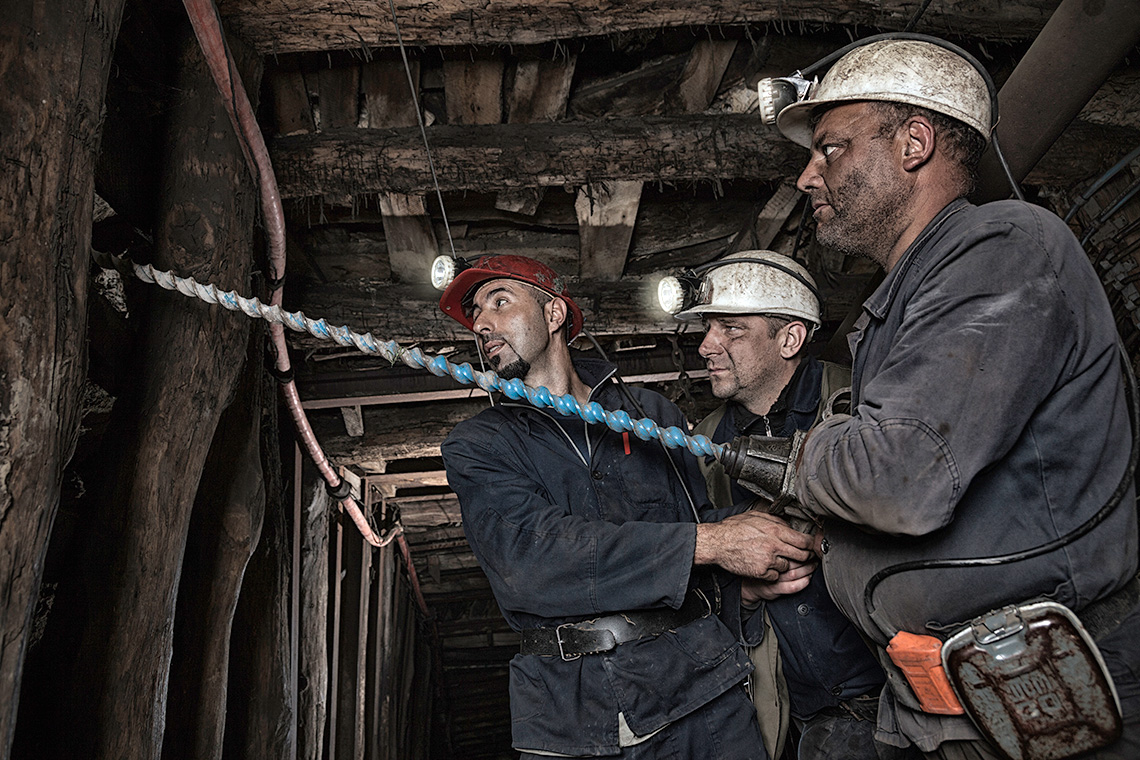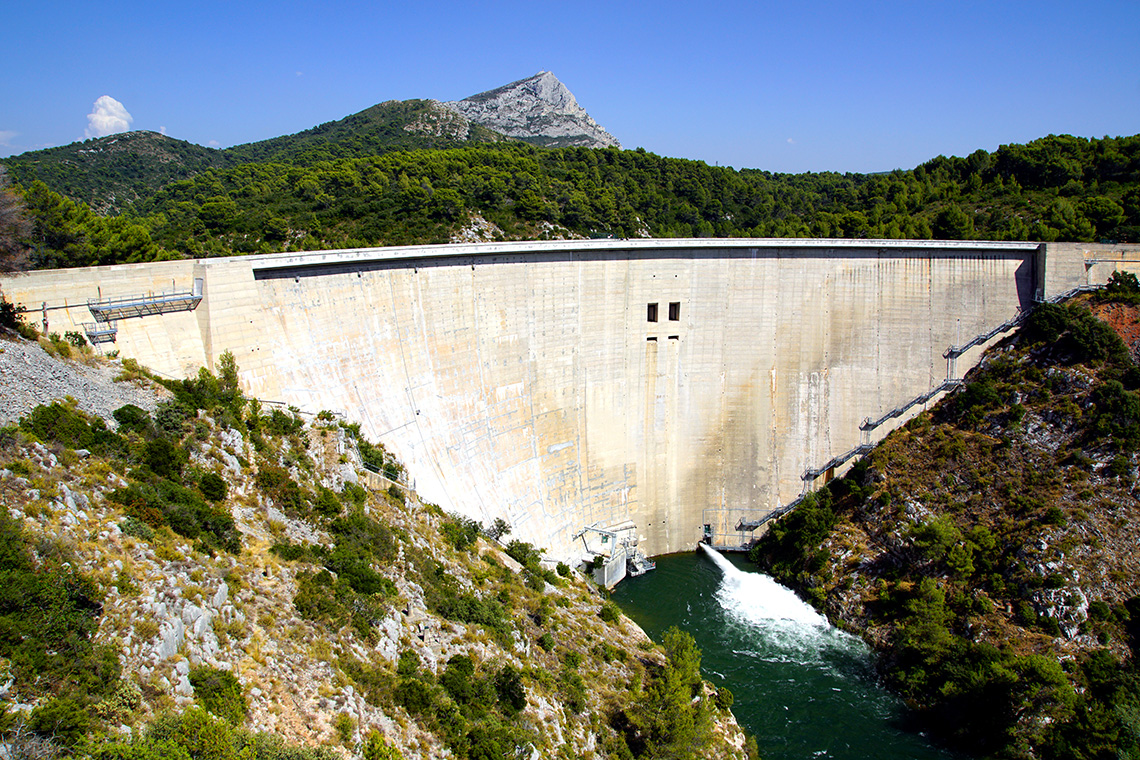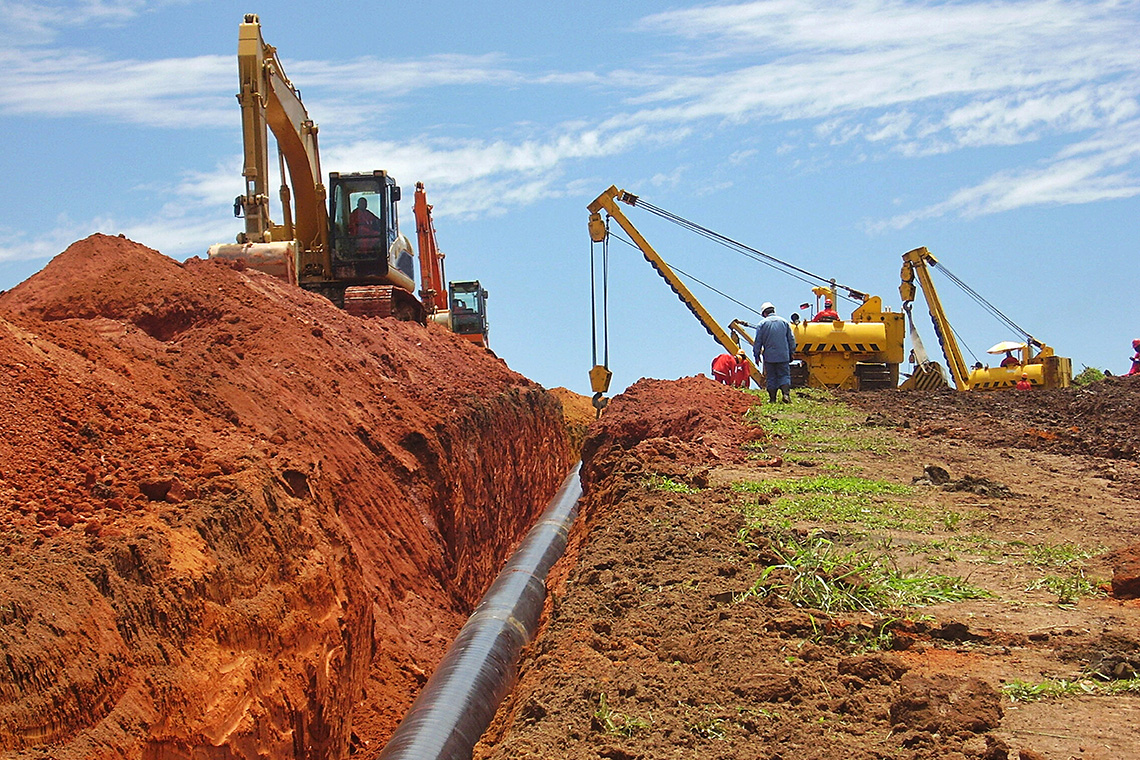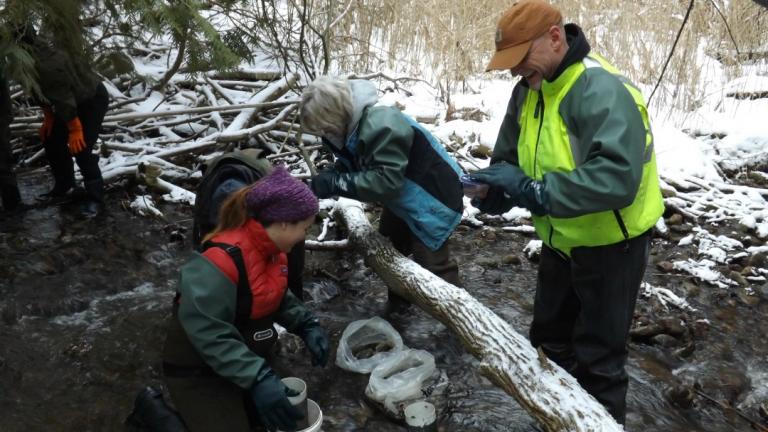Minds On
The art of asking questions
We ask questions to learn more about the world around us every day.
Asking questions helps us gain a stronger understanding of new information as well as digging deeper into topics that we have already been introduced to.
Let’s practice the art of asking questions:
- What questions could we ask about the impact of resource extraction from the information shared in the following images and descriptions?
Action
Why do we ask questions?
As we learn new information in any form, we ask questions to make sense of the learning and to understand this information at a deeper level. As we begin to research a topic of interest, these questions we ask guide our personal exploration.
How do we know what types of questions will guide these explorations?
There are several ways we can develop research questions that will guide our research. All great articles, books, documentaries, and podcasts begin with a question or questions that guide the research.
One way to support us in asking guiding questions is to use a Q-chart or question chart. A Q-Chart is based on the variety of questions we ask and what information we are seeking.
 Description
Description
The rows of the chart read: Who, What, When, Where, How, Why, Which and the columns read “is/was”, “did/do”, “can/could”, “would”, “will/won’t” and “might”. The chart is divided into four parts. The yellow part is titled Data Gathering and it is an intersection between Who, What, When, Where rows and “is/was”, “did/do”, “can/could” columns. The blue part is titled Predicting/Probing and is an intersection between Who, What, When, Where rows and “would”, “will/won’t” and “might” columns. The red part is titled Analyzing/Synthesizing/Evaluating and is an intersection between How, Why, Which rows and “is/was”, “did/do”, “can/could” columns. The pink part is titled Creating/Imagining/Inventing and an intersection between How, Why, Which rows and “would”, “will/won’t” and “might” columns.
Combining words with the standard questions adds a new dimension to inquiry.
Click on ‘Example’ to reveal some examples of this combination.
Who might be impacted by pipelines in British Columbia?
Or
How can new forms of energy resources that leave little impact on the natural environment replace fossil fuels?
Click on the title of each process to reveal more information about them and to access a few examples.
The first types of questions we ask are called data gathering questions. These are the fact-finding missions we need to engage in to learn the facts about a new topic or concept: who, what, where, when, and how many are all examples of these data gathering questions.
- Which questions are data gathering?
- If you were going to research information about the largest hydroelectric dam in China, what are two data gathering questions you might ask?
Click on ‘Example’ to reveal an example of such question.
Once we have gathered, analysed, and probed, we now begin creatively using the information and data we now understand to suggest solutions to challenges.
- Which questions are analysing, synthesizing, and evaluating, questions?
- If you were going to continue to learn about the largest hydroelectric dam in China and you have gathered your data, what are two questions in this category you could ask?
Click on ‘Example’ to reveal an example of such question.
As we continue to learn and understand more about a topic, we then begin to ask predicting questions. These questions are based on the data we have learned and considered through evaluation of that data. We become curious as to the future of this topic and probe deeper into the data.
- Which questions are predicting questions?
- If you were going to continue to learn about the largest hydroelectric dam in China and you have gathered your data, what are two questions in this category you could ask?
Click on ‘Example’ to reveal an example of such question.
Once we have gathered, analysed, and probed, we now begin creatively using the information and data we now understand to suggest solutions to challenges. Explore the image above.
- Which questions are creating, imagining, and inventing questions?
- If you were going to continue to learn about the largest hydroelectric dam in China and you have gathered your data, what are two questions in this category you could ask?
Click on ‘Example’ to reveal an example of such question.

Now that you have had some practice asking questions, explore how you can use this questioning to guide your explorations. For each task, record your responses in a method of your choice.
Press on each phrase to practice asking questions.
We can use questions to help find a topic to explore.
For example:
How does mining impact the natural environment? How do pipelines affect the natural environment?
Now, place one of the questions in an internet search. What do you notice?
We can use questions to help find a topic to explore further by adding specific information including the region of the world and communities we are interested in researching.
For example:
How does mining impact Indigenous communities in Brazil? How do pipelines affect Indigenous communities in Canada?
Now, place one of the questions in an internet search. What do you notice? How did this change the sources?
We can use questions that help bring a variety of perspectives on our topic.
For example, all of the following questions:
- What are some Indigenous perspectives on mining in Canada?
- What is the Canadian government’s perspective?
- What is the mining company’s perspective?
Search for these three questions online and take note of the sources that emerge each time.
Equally important is to question the sources you are using.
You can ask:
- What type of source is it?
- Is the source a book, article, blog?
- Is it with a publisher or a news source?
- Is it self-published?
- Has it been fact-checked?
- Does the source include a variety of perspectives on the topic?
Do an online search on one of the questions you asked about the hydroelectric dam in China. Take note of the top three sources that appear. Attempt to answer these questions about the sources.
Formulating questions
Developing a geographic perspective can influence the types of questions we ask during our inquiry. While formulating questions, include a geographic perspective by thinking about the economic, environmental, social, and political factors that impact the topic. By including these factors, we can develop multiple perspectives on a given topic.
Geographic perspective
Geographers study many issues facing the physical environment and resources all over the world. Every issue has opponents and supporters that are reflecting political, social, environmental, and economic values. It is very important to consider all of these perspectives in order to solve the challenges the issue poses.
Press the title of each perspective to reveal more details about them.
In Geography, we can also develop questions by considering the following concepts.
Press the title of each concept to learn more about them.
Spatial means something that exists or occurs in a space. Spatial significance explores where places are located and what makes that location significant.
- identify the location of places on the earth’s surface
- consider the characteristics of various places
- analyse the distribution of people, animals, plants, resources, and the physical processes of the natural world
Once we are aware of a specific place, we want to compare the characteristics of that place with those of other places.
- identify similar and repeating characteristics within regions and between them
- decide which characteristics repeat over a time period
- determine why these characteristics repeat
These are connections between the parts of one system or between two systems, such as humans and the environment.
- identify why and where interactions occur between humans and natural processes
- determine how systems are formed as a result of these connections
- examine the impact of a process or event on human activities, natural characteristics, and natural processes
Can you use this information to complete the multiple-choice activity? Select the correct answer.
Asking questions with a geographic perspective
It’s time to take your learning about how to formulate questions to guide understanding AND considering a geographic perspective.
Complete one of the two activities below:
Activity 1: Geographic perspective on a pipeline in Brazil
Let’s return to one of the images in Minds On. Choose:
- The Bimont Dam in France
- The coal mine
- The pipeline in Brazil
Now that we have considered several types of guiding questions and the elements of developing a geographic perspective, let’s reflect on the specific questions we could ask.
For example, let’s consider the topic of pipelines in the Amazon.
A topic question could be: How do pipelines in the Amazon Rainforest affect Indigenous peoples in the region?
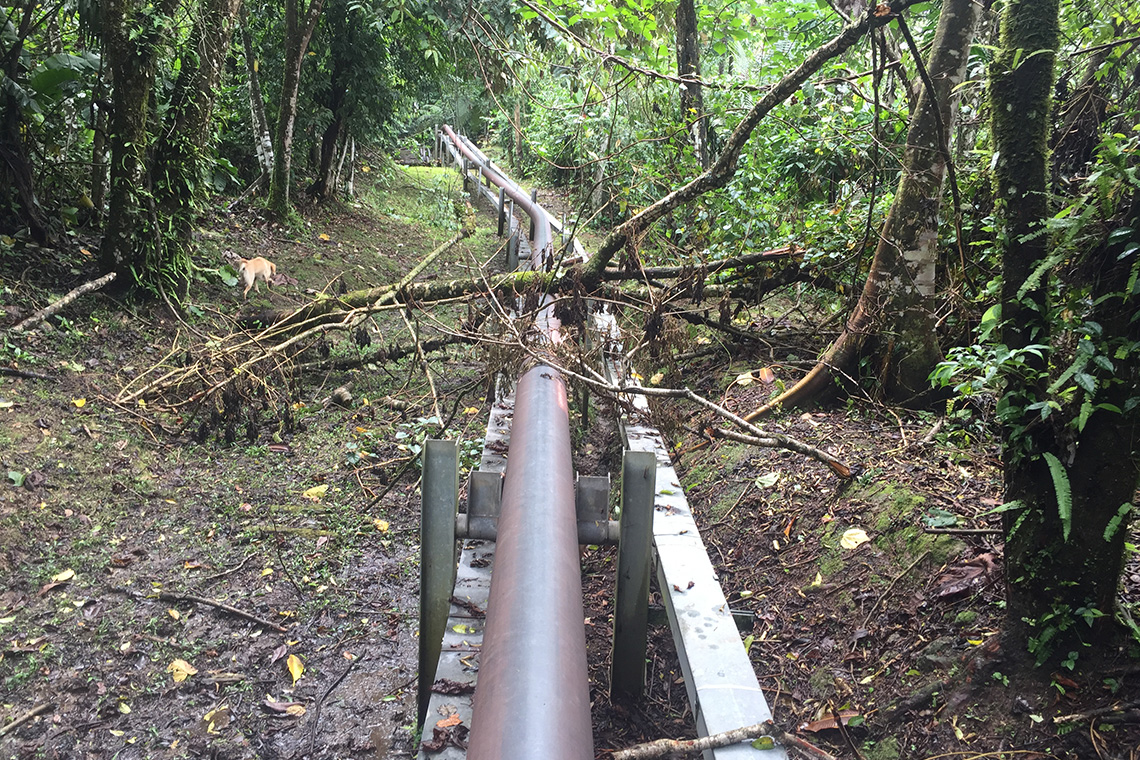
this is an image of a pipeline being laid in the ground in Brazil. A long hole is dug and the large pipe, which will contain gas, is laid into the hole.
Develop four other questions that can guide your research based on a geographic perspective and the other factors listed above. Record your four questions using a method of your choice. Return to the Q-chart and record what type of questions you are asking. Then, use the information learned about performing a search to answer your questions while completing the chart below or using a method of your choice. Take note of the sources you use!
Complete the Geographic Perspective Questions in your notebook or use the following fillable and printable document.
| Factor | Question/ Type of Question | Answer | Source |
|---|---|---|---|
| Economic | |||
| Environmental | |||
| Social | |||
| Political |
Press the ‘Activity’ button to access Geographic Perspective Questions.
Connections
Reflect
How did your questions help guide your understanding of the topic you chose?
Activity 2: Geographic perspective on natural resources in Canada
Let’s extend our geographic perspective by selecting one of the following articles or videos to explore.
Develop four questions that will guide your inquiry. Complete the following organizer using a method of your choice. Return to the Q-chart and record what type of questions you are asking.
If you are able to find the answers to your questions from the article and the video, record those answers in the chart as well.
These article and the video explore the topic of natural resource use in Canada. Use the headlines, images, and titles to formulate your four questions.
The article "For the Love of Salmon" discusses bringing salmon back to Lake Ontario.
The video "Growing Vertical Farming" discusses the future of farming using hydroponics.
Complete the Geographic Perspective Questions 2 in your notebook or use the following fillable and printable document.
| Factor | Question/ Type of Question | Answer |
|---|---|---|
| Economic | ||
| Environmental | ||
| Social | ||
| Political |
Press the ‘Activity’ button to access Geographic Perspective Questions 2.
Student Success
Think-Pair-Share
How did your questions help guide your understanding of the topic you chose?
Were you able to find the answers to your questions in the article? If not, how could you find these answers?
Note to teachers: See your teacher guide for collaboration tools, ideas and suggestions.
Consolidation
Developing questions
Consider the geographic issues explored throughout the course. Choose one topic and record four geographic questions that relate to that topic in a method of your choice.
Topics:
- Deforestation and First Nations peoples in Canada
- Drilling in the Arctic
- Pipelines and First Nations in Canada
- Flow Resources including Solar Power, Wind Power, and/or Tidal Power
Return to the Q-chart and record what type of questions you are asking. Conduct a search to answer your questions about this topic. Take note of the sources you use.
Complete the Developing Questions in your notebook or use the following fillable and printable document.
Press the ‘Activity’ button to access Developing Questions.

Connections
Connections
- Why is it important to ask questions about new topics or information learned?
Press ‘Hint’ to reveal more guidance about this question.
- How does formulating questions to guide exploration of a topic change how you locate information about that topic?
- During your exploration in the Action section, why might you have asked more questions while you were conducting your research? Why might more questions arise after this research?
Reflection
As you read the following descriptions, select the one that best describes your current understanding of the learning in this activity. Press the corresponding button once you have made your choice.
I feel...
Now, expand on your ideas by recording your thoughts using a voice recorder, speech-to-text, or writing tool.
When you review your notes on this learning activity later, reflect on whether you would select a different description based on your further review of the material in this learning activity.
